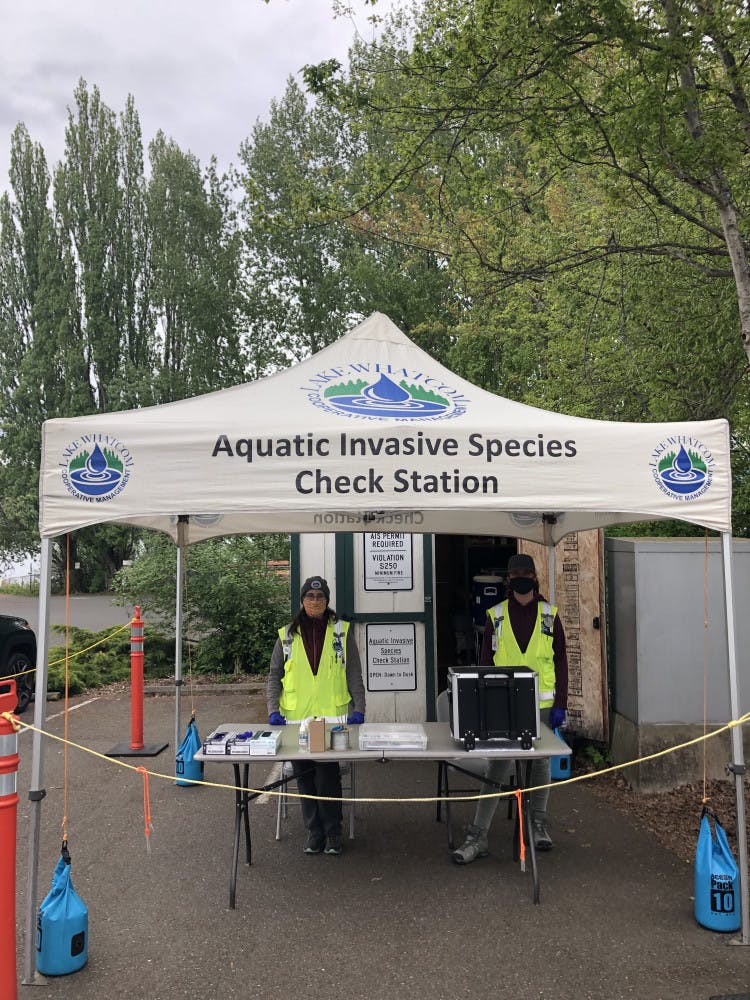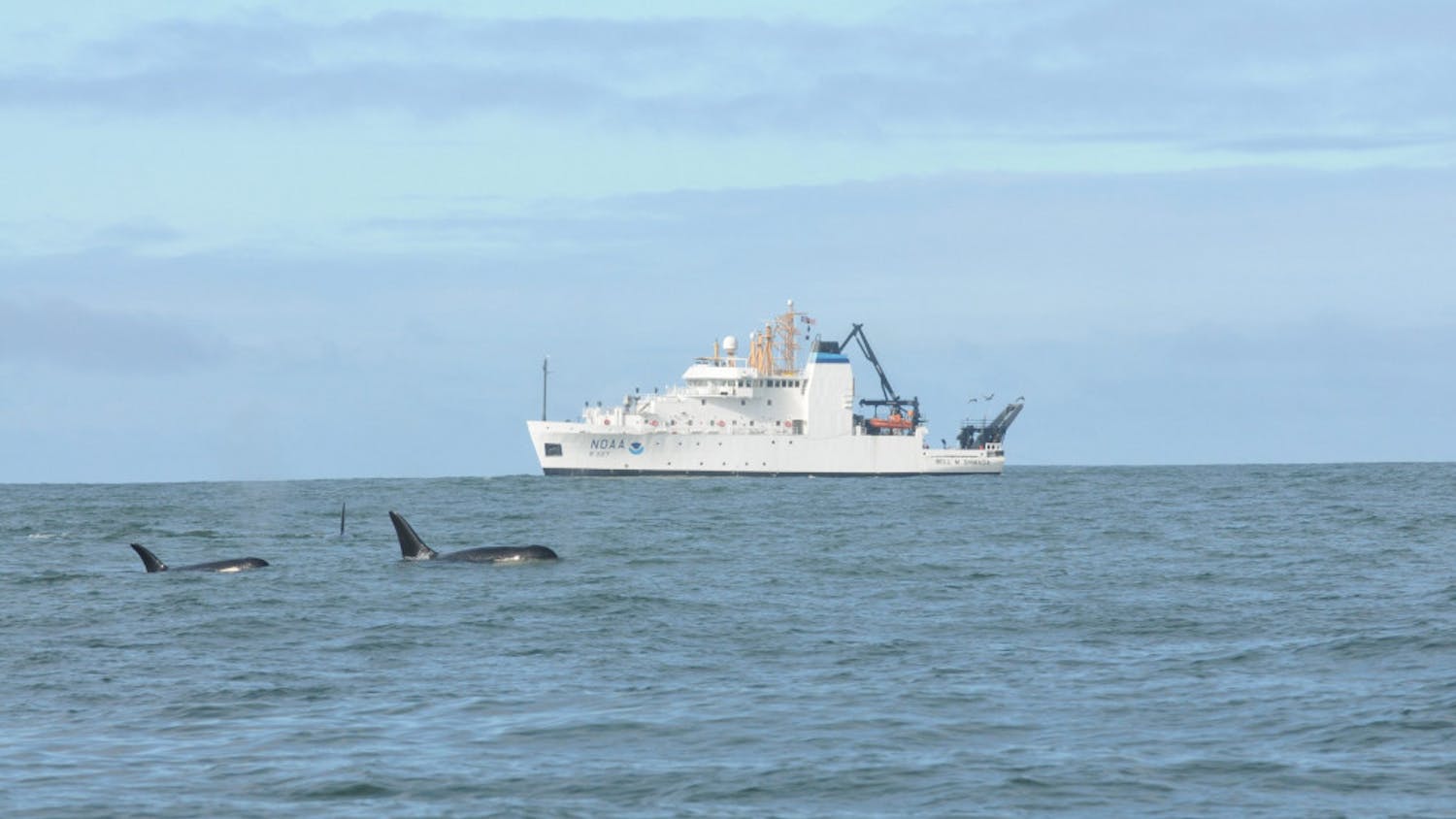
Boating season in Whatcom County began April 24, with boat check stations opening at Lake Samish, Bloedel Donovan Park and Sudden Valley Marina, according to the City of Bellingham website. The Lake Whatcom South Bay station opened on May 2.
Boaters must purchase a permit online before going to check stations; the stations will not have in-person purchasing of permits available. 1-day, 3-day and annual permits are available for both registered and non-registered motorized watercrafts. Hand-carried boats like canoes, kayaks and rowboats do not need permits, but still need to be inspected.
Whatcom Boat Inspections instructs boaters to clean, drain and dry boats after leaving waters and before entering another body of water. Boats must be thoroughly cleaned using high pressure or high temperature water and all fluids must be drained from the boat, including wells, bilge and engine cooling water.
Teagan Ward, the aquatic invasive species coordinator for Whatcom County, has a team of around 20 people working to combat the spread of invasive aquatic species, including Asian Clams, Eurasian Watermilfoil, New Zealand Mudsnails and Quagga Mussels.
Ward said that the main species of concern are Asian Clams, which were identified in Lake Whatcom in 2011 and Lake Samish in 2019. In 2020, Ward’s team found five additional sites where they were very well established.
The clams are hazardous because they clog intake pipes and can affect Bellingham’s water supply if the population grows.
“Most of my staff work as watercraft inspectors,” Ward said. “Our inspectors go through a pretty intense training, where they learn about biology and different kinds of watercrafts.”
Ward said that any boat might unknowingly carry invasive species, even if it doesn’t look like it.
Boats need to be inspected by someone from the team every time before they can enter Lake Whatcom or Lake Samish and they are given a unique sticker that permits them to enter. If someone lives on the lake or can’t access the check station, the team has a mobile station that can meet owners at their residence.
Ward said that every boat from out of state must be deep cleaned and decontaminated before entering Whatcom waters. Designated high-risk areas include the lower Colorado River, the Midwest and even some areas around Seattle.
Lakewood is a Western-owned watersports facility. Jeff Davis, facility manager, said that their boats are only allowed to enter Lake Whatcom.
“Our boats are checked once a year by the staff that the county runs, and since they don’t leave, there’s no need for them to be checked,” Davis said.
If private boats are brought to the Lakewood dock, they must go through a check station beforehand, Davis said.
Laurel Baldwin, Whatcom County noxious weed board coordinator, said that boat checks are done for weeds as well as non-plant invaders.
Baldwin’s job revolves around finding, inspecting and clearing sites of toxic weeds, with around 700 to 800 sites around the county currently monitored. Land owners of private sites reach out to Baldwin and have her investigate plants of questionable nature.
“Every day is pretty different and it’s one of the reasons I really like my job,” Baldwin said.
Baldwin has worked on some projects for several years, including a Knotweed management project along the Nooksack River. Baldwin has just one crew on that project, but she feels that it’s been successful.
In 2005, when the project was started, there were around 300 to 400 sites along 40 river miles. Now, the project is down to around a dozen small sites.
“The first couple years were hard, there were a lot of sites, but the crew worked really hard and got the population down so [the knotweed is] a lot more manageable,” Baldwin said.
Baldwin said that Bohemian Knotweed is the most common. It impacts streams, habitat functions for fish and invertebrates.
“It monkey wrenches the plant life, which has an impact on the whole ecosystem,” she said.
Eurasian watermilfoil is listed as a species of concern on the City of Bellingham website, and the plant has been in Lake Whatcom since the 1960s, she said. A presence was also identified in Lake Terrell in 2013, Baldwin said.
“Most of the lakes that [Eurasian watermilfoil] turns up in typically have boat launches,” she said.
When the milfoil canopies, it has the capacity to affect dissolved oxygen. In Lake Whatcom, the milfoil doesn’t have a tendency to canopy because it’s a colder lake, whereas Lake Terrell is much shallower and warmer so it sees more canopy from the milfoil, Baldwin said.
The canopying milfoil can be hazardous for swimmers, as they can get tangled in the plant or get lost underwater, Baldwin said. In 2013, the milfoil was completely covering the surface of the northern part of Lake Terrell, but has since reduced.
Baldwin said that educating yourself on noxious weeds and reaching out to the control board is the best way to help combat the spread.
“Early detection and rapid response is something that we live by, and in many cases it does work,” Baldwin said.
Clay Wren is a third-year finance major and journalism minor who uncovers the hidden stories of Bellingham. He can be reached any time at claywren.thefront@gmail.com, Instagram: @wrenthejewels




